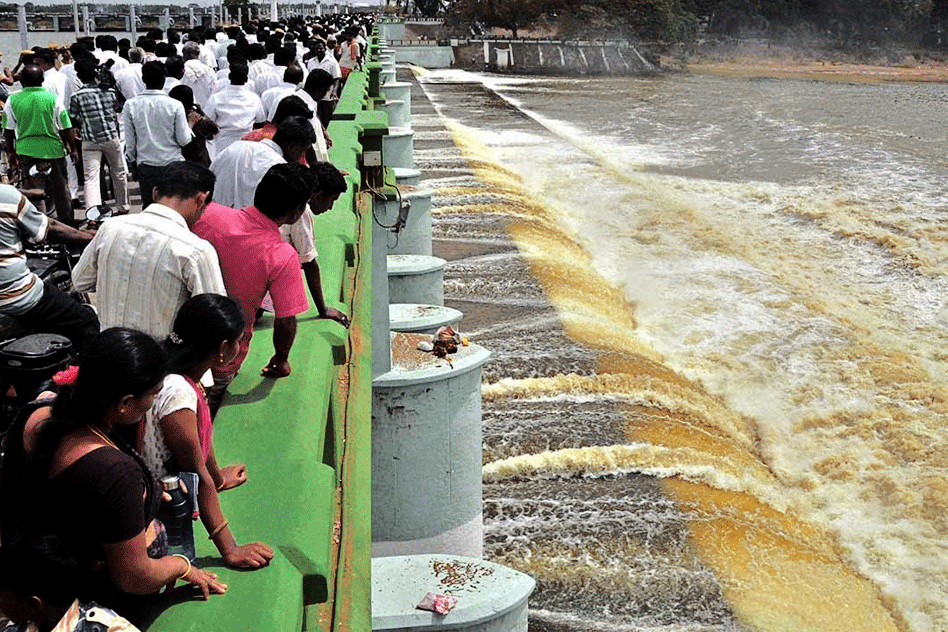
The Cauvery Water Dispute Between Karnataka And Tamil Nadu: All You Need To Know
7 Sep 2016 6:26 AM GMT
Heavy protests leading to violence have sparked off in Karnataka again over the Cauvery water dispute. The agitation by farmers started after Supreme Court on Monday directed Karnataka state government to release 15,000 cusecs of Cauvery water to Tamil Nadu for the next 10 days to save the samba crops.
Activists and farmers of Cauvery Horata Samiti have been at the forefront of the issue in Karnataka. They had blocked roads in Shrirangapattana taluk of Mandya on Tuesday to protest against the directive of Supreme Court.
Karnataka chief minister Siddaramaiah called for an all-party meeting to discuss the matter but with a ‘heavy heart’ they decided to release water to Tamil Nadu because it won’t be a good decision to go against the order of the apex court.
The consequences so far
Several Kannada organisations have called for a state-wide bandh on September 9. The ongoing protests have caused disruption in the transport system of the two states. A KSRTC bus has been torched at Salem in Tamil Nadu on Tuesday. KSRTC also cancelled 700 buses to Mysuru, Mandya, Ooty and several other parts of Tamil Nadu. The screening of Tamil movies was stopped at several theatres across the Karnataka.
What is this dispute about?
Originating from Kodagu, the Cauvery basin covers a large territory of Karnataka and Tamil Nadu and smaller parts of Kerala and Puducherry. During the British rule, the main issue of water sharing was restricted between Tamil Nadu and Karnataka but Puducherry and Kerala also entered the fray later. Tamil Nadu needs water to sustain the extensive farming system of the state, while Karnataka wants to triple its water share from the river. And because of these Tamil Nadu will have to face a shortage.
The history of the dispute
The history of the sharing of Cauvery water dates back to 1892 when an agreement was filed between Madras Presidency and Mysore for arbitration. The two warring sides reached an agreement in 1924.
Permission to build a dam in Mysore was given so that it can hold 44.8 thousand million cubic feet of water. The agreement was meant to be valid for 50 years and a review thereafter it was over.
None of the states accepted the terms of the agreement and disputes continued even after independence and the matter was taken up to the Supreme Court.
A Fact Finding Committee was set up in 1970 and which found that Tamil Nadu has irrigated lands of 25,80,000 acres while Karnataka had 6,80,000. Hence the demand for water grew more for Tamil Nadu. However, none of the agreements stayed for a long time and the Cauvery Waters Tribunal was constituted on June 2, 1990.
The tribunal, after hearing the demands of all the parties, concluded in 2007 to gave 419 tmc ft ( 1 TMC = thousand million cu.ft) for Tamil Nadu and 270 tmc ft for Karnataka. Kerala was awarded 30 tmc ft and Pondicherry 7 tmc ft. But again, the Tamil Nadu and Karnataka government challenged the decision in Supreme Court.
In 2012, Prime Minister Manmohan Singh, chairman of Cauvery River Authority, asked Karnataka government to release 9,000 cusecs of water daily.
The situation at present
The situation is volatile again this year because of the dearth of rainfall which has resulted in sharing lesser amount of water. Both Karnataka and Tamil Nadu have received less than normal rainfall during the monsoon.
 All section
All section













